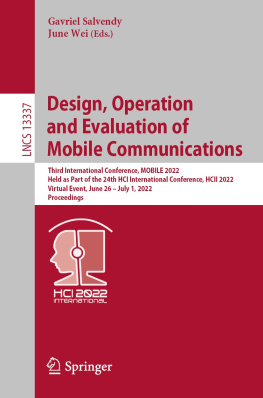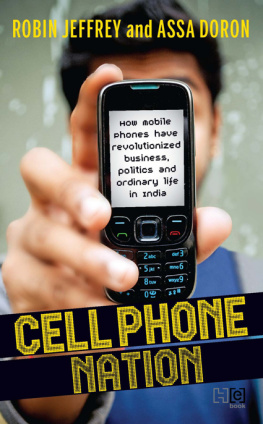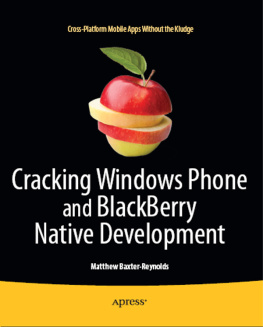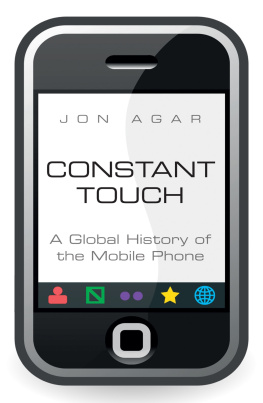Contents
List of Figures
List of Tables
Guide
Pagebreaks of the print version
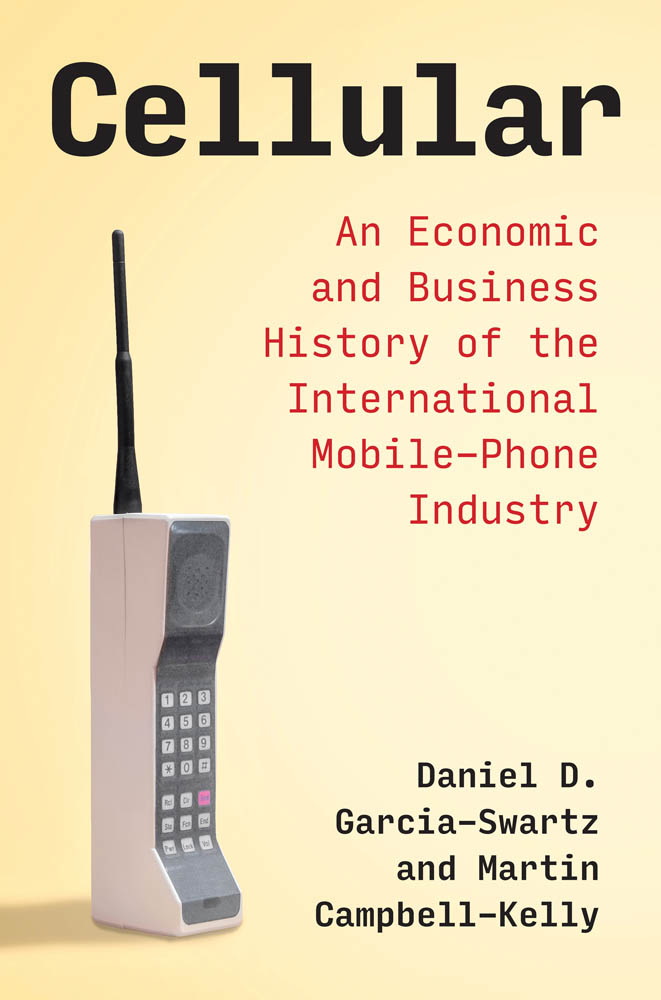
History of Computing
William Aspray and Thomas J. Misa, editors
A complete list of the titles in this series appears in the back of this book.
CELLULAR
AN ECONOMIC AND BUSINESS HISTORY OF THE INTERNATIONAL MOBILE-PHONE INDUSTRY
DANIEL D. GARCIA-SWARTZ AND MARTIN CAMPBELL-KELLY
THE MIT PRESSCAMBRIDGE, MASSACHUSETTSLONDON, ENGLAND
2022 Massachusetts Institute of Technology
All rights reserved. No part of this book may be reproduced in any form by any electronic or mechanical means (including photocopying, recording, or information storage and retrieval) without permission in writing from the publisher.
The MIT Press would like to thank the anonymous peer reviewers who provided comments on drafts of this book. The generous work of academic experts is essential for establishing the authority and quality of our publications. We acknowledge with gratitude the contributions of these otherwise uncredited readers.
Library of Congress Cataloging-in-Publication Data is available.
ISBN: 978-0-262-54392-7
d_r0
CONTENTS
LIST OF FIGURES
In a 1947 Bell Labs internal memorandum, D. H. Ring proposed the cellular concept. Instead of using a single high-power transmitter to reach users within a radius of 40 km, Ring proposed using cells as small as 1 km, with lower-power transmitters within each cell and an assignment of channels to each cell. This technique allowed frequencies to be reused, greatly increasing capacity. Courtesy of AT&T Archives and History Center.
Amplitude and frequency modulation.Source: Constructed by the authors with Octave.
A British Post Office wireless telephone in use in 1960. Courtesy BT Heritage & Archives.
Picture of a BT Cellnet Jade mobile phone in use in 1985. Courtesy BT Heritage & Archives.
A Motorola Dynatac 8000X (Brick) cell phone. Released in 1983, it was priced at USD 3995 in the United States. Courtesy of AT&T Archives and History Center.
Cellular density in Scandinavia, the United States, and Japan, 19801991.Source: ITU database.
Cellular density in Britain, Germany, Italy, and France, 19851991.Source: ITU database.
Adoption of closed and open cellular standards, number of subscribers, 19791990.Source: Calculations by the authors from information in the ITU database.
A 1983 advertisement promoting Ameritech mobile communications, the first company in the United States to provide cellular mobile phone service to the public. Courtesy of AT&T Archives and History Center.
The Nokia 101, introduced in 1992. It was one of the last handsets of the analog era. With its candy bar form factor, it claimed to be the worlds most portable phone. Courtesy Nigel Linge and Andy Sutton.
World sales of network infrastructure, 1990, shares in number of subscribers.Source: US International Trade Commission,Global Competitiveness of U.S. Advanced-Technology Industries: Cellular Communications(Washington, DC: US International Trade Commission, 1993), 28.
World sales of terminals, 1990, shares in units.Source: US International Trade Commission,Global Competitiveness of U.S. Advanced-Technology Industries: Cellular Communications(Washington, DC: US International Trade Commission, 1993), 29.
Cellular-service prices across OECD countries, 1992.Source: OECD,OECD Communications Outlook 1993(Paris: OECD, 1993), 85.
Cellular-service prices and cellular density among second-wave countries, 1992.Sources: OECD,OECD Communications Outlook 1993(Paris: OECD, 1993), 85; and International Telecommunications Union database.
Cellular-service prices and cellular density among cellular pioneers, 1992.Sources: OECD,OECD Communications Outlook 1993(Paris: OECD, 1993), 85; and International Telecommunications Union database.
A typical 2G cell tower. Courtesy of AT&T Archives and History Center.
The architecture of the GSM system.Source: Adapted by the authors from J. Meurling and R. Jeans,The Mobile Phone Book(London: Ericsson Radio Systems, 1994), 104; and W. Webb,Understanding Cellular Radio(Boston: Artech House, 1998), 919.
Number of subscribers (left axis) and average monthly bill (right axis) in the US cellular market, 19872000.Source: FCC,6th Annual Commercial Mobile Radio Services Competition Report(Washington, DC: FCC, 2001), C-2.
Vodafone advertisement promoting SMS, a key feature of 2G cellular phones.Source: Martin Campbell-Kelly.
A phone for the Orange network. Britains fourth GSM network was launched in spring 1993 with the catchy slogan The futures bright, the futures orange. To initiate first-time customers, the launch pack included a Nokia 2140 handset and comprehensive user guides. Courtesy Nigel Linge and Andy Sutton.
Cellular density in Britain, the United States, Japan, and Sweden, 19792000.Source: International Telecommunications Union (ITU) database.
Cellular density in Britain, Germany, Italy, and Portugal, 19852000.Source: ITU database.
A disguised cellular mast in the picturesque town of Wuzhen, China.Source: Wikimedia.
Cellular density in Britain, China, and India, 19852010.Source: ITU database.
Cellular density in Britain, China, and India, 115 years after launch of service.Source: Calculated by authors from ITU database.
The Ericsson LX100 phone, 1997. A typical lightweight cell phone marketed by AT&T wireless services. Courtesy of AT&T Archives and History Center.
Cellular density in several Central and Eastern European countries, 19852010.Source: International Telecommunications Union database.
Market structure in OECD countries, number of countries, 19902000.Source: Organisation de coopration et de dveloppement conomiques,Tlphonie mobile: Structures et tendances en matire de Prix(Paris: Organisation de coopration et de dveloppement conomiques, 2000), 87.
The Cellnet National Control Centre, Slough, UK, 1996. Courtesy The National Museum of Computing, UK.
Shares of the US digital handset market, 19951998.Source: J. Funk,Global Competition between and within Standards: The Case of Mobile Phones(Houndmills, UK: Palgrave, 2002), 170.
Imagining the future. With the arrival of 3G and Internet access on mobile phones, new possibilities were being explored. These concept phones announced by Ericsson in 2000 envisioned applications such as electronic payment systems and advanced user interfaces. The phones were never manufactured. Courtesy The National Museum of Computing, UK.


